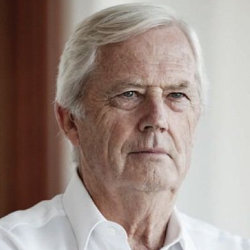After almost six weeks of negotiations agreement has now been reached between the leaders of Fine Gael (FG), Fianna Fáil (FF), and the Green Party (GP) to form a coalition government in Ireland.
On 15 June, more than four months after the general election on 8 February 2020, a programme for government was signed by the three party leaders: Leo Varadkar (FG), Micheál Martin (FF), and Eamon Ryan (GP). It was an outcome many thought impossible – think in Australian terms of a coalition of Labor, Liberals and Greens.
In February the electorate gave the politicians an extremely difficult puzzle to solve, electing to Dáil Éireann, the 160-seat lower house of the Irish parliament, a motley collection of representatives, known as TDs (Teachtaí Dála). The governing party, FG, had won only 35 seats, while its traditional rival, FF, had secured 38 seats. Sinn Féin (SF), normally a political fringe-dweller in the Republic of Ireland, had picked up 37 seats. The remaining 50 seats were shared among six parties and 19 independents. Of the six parties, the GP with 12 had the highest number of seats.
Given such numbers, many thought a new election was inevitable. But the prospect of a second poll, daunting at the best of times, was particularly unpalatable during the Covid-19 lockdown. As explained in articles I wrote for Pearls and Irritations in February and May, despite historical and ideological impediments, conditions were opportune for an improbable alliance between FF and FG, the two centre-right parties that were the legacies of opposite sides in the Irish Civil War a century ago, and the left of centre GP, a product of the environmental movement of more recent times.
The 125-page coalition agreement signed by the leaders and approved by a vote of the TDs and senators from each party is called ‘Programme for Government: Our Shared Future’. Its somewhat pedestrian title is more than made up for by the audaciously aspirational names assigned to its twelve ‘Mission’ statements: e.g. ‘A Better Quality of Life for All’, ‘Reigniting and Renewing the Economy’, ‘A Green New Deal’, ‘Universal Health Care’, ‘Housing for All’. It seems everyone in this National Hunt race will be a winner. What could possibly go wrong?
Well, our three-legged horse Improbable Coalition has one more fence to jump before collecting the cup. ‘Programme for Government’ must be approved by each party’s membership. In the case of FF, a simple majority of its 18,000 constituency members will suffice, while FG will leave ratification to an electoral college, a majority of whom are TDs, senators, MEPs and executive council members. For the GP, however, party rules require that two-thirds of its 2,500 eligible voting members must approve the agreement.
During the negotiations FF and FG supporters in rural areas expressed dissent at some of the GP’s shopping list of 17 demands. Most notably they were concerned that the agriculture sector would be called upon to do the heavy lifting to achieve the GP’s redline target of an average 7 per cent per annum reduction in overall greenhouse gas emissions from 2021 to 2030. Yet, political commentators expect that FF and FG members will fall into line with their leaderships, even if that means getting into bed with their civil war enemies, let alone a bunch of greenies.
As for the GP, despite the agreement’s distinctly green tinge, there are many in the party sceptical as to whether FF and FG will deliver on their promises. Whether the sceptics amount to more than a third of the membership is yet to be seen. Some GP members will also remember the party’s last experience in government as junior partner to FF in 2007. That led to the GP’s parliamentary wipe-out when the government was defeated in 2011.
For supporters of the agreement, a potential disaster was averted when GP deputy leader Catherine Martin voted in favour of the agreement in this week’s party-room meeting that saw three of the GP’s twelve TDs abstain. Martin, who led the GP negotiating team, had initially opposed the idea of going into government with FF and FG, and early this month she nominated to run against current leader Ryan when a leadership ballot is held after the ratification vote has been taken.
Despite her role in the negotiations, there were fears that Martin would vote down the agreement. Her endorsement of it might be sufficient to persuade her fellow sceptics to vote in favour of the deal.
Voting is expected to be completed by Friday 26 June and, if the results are positive, the Dáil will sit the next day to elect An Taoiseach (the prime minister). Under the agreement that position will fall to Micheál Martin, leader of FF, who will hold the position until 15 December 1922. It will then pass to the leader of FG, currently Leo Varadkar. The cabinet will consist of six FF, six FG and three GP ministers, assisted by three junior ministers appointed by agreement of the three party leaders.
The elevation of the FF leader to the top job is ironic given that Varadkar (who will resign as taoiseach to make way for Martin) and FG are enjoying the best polling figures since FG came to power in 2016. According to a poll published this week in the Irish Times, Varadkar has a 75 per cent approval rating while FG’s share of the vote is 37 per cent, up from 21 per cent at the February general election. Martin and FF, meanwhile have gone backwards, with the party on 14 per cent, a fall of 7 per cent since February.
And what of SF? The party has been rather quiet of late, no doubt awaiting the result of the negotiations. Its prospects will not be harmed by the formation of the new government. Its chances of joining a governing coalition this time round were always slim, given the animosity of the two major parties towards it.
With the advent of an FF/FG/GP government, SF will be the major opposition party in the Dáil. As such it will be afforded the airtime that oppositions are entitled to expect in a democratic system. This will enable SF to consolidate its position as the major left-of-centre party in the Republic and to put it in a strong position to gain seats at the next general election should the government fail to deliver on its promise of magic pudding all round.
But we are getting ahead of ourselves. We must first await the result of the ratification process to see if Improbable Coalition will clear the last fence and pass the winning post. We are not there yet.




